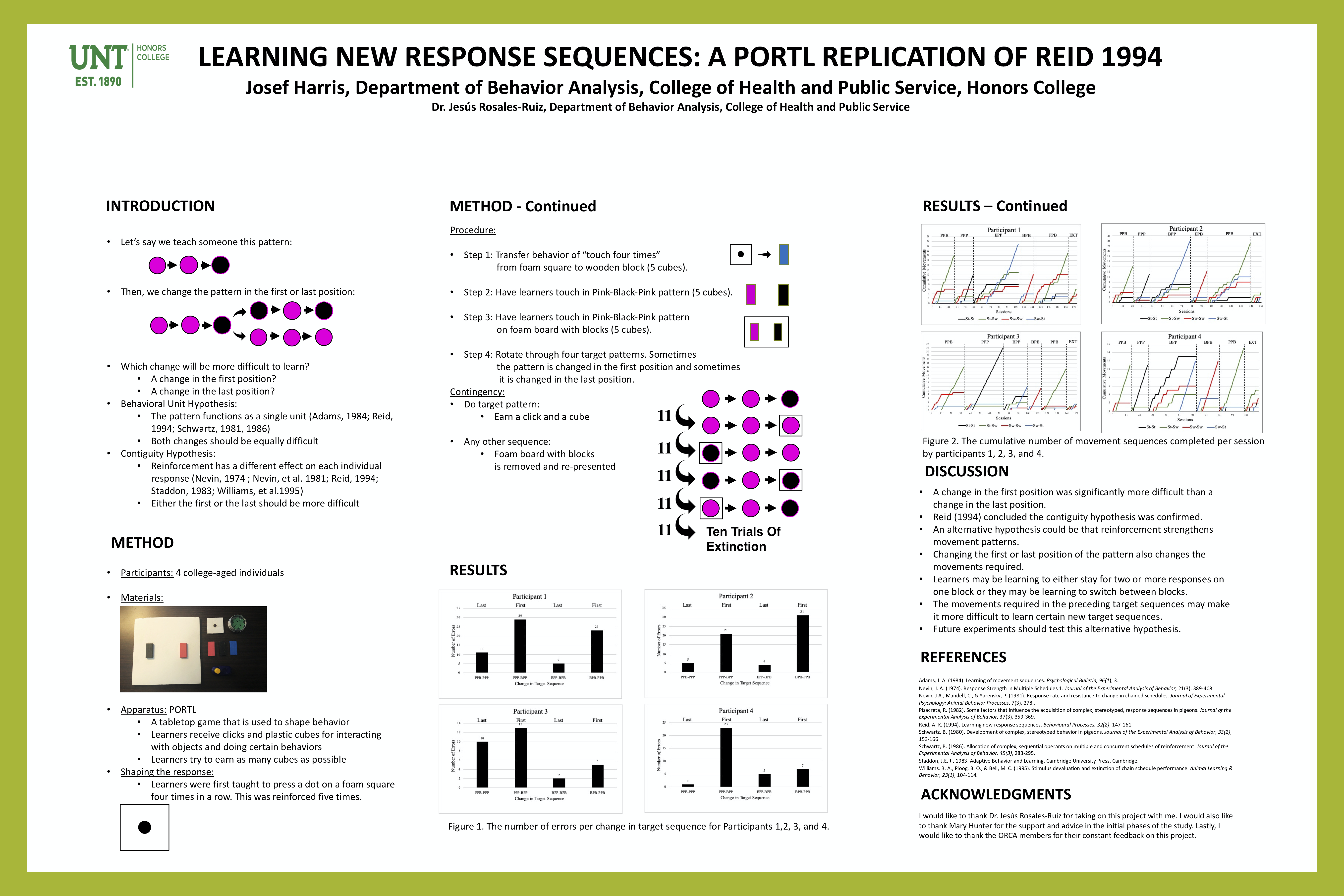First Name:
JosefLast Name:
HarrisMentor:
Dr. Jesús Rosales-RuizAbstract:
Reid (1994) taught rats to complete three-response sequences using a right and left lever. Subjects were periodically shifted to a new response sequence. Reid showed that rats learned a new sequence faster when the last element in the sequence was changed than when the first element was changed. The present study replicated Reid (1994) using human participants and a tabletop game called PORTL. Participants were required to touch a pink block and a black block to complete a variety of three-response sequences. Similar to Reid, participants were periodically shifted to a new target sequence that differed in either the first or last position. This study also found that acquisition of the new sequence occurred more rapidly when the shift was in the last position, and more errors occurred when the change was in the first position. Reid’s conclusions assumed reinforcement strengthens individual left and right responses. An analysis of the data in this study led to an alternative hypothesis. Instead of learning individual left and right responses, participants may have learned movement patterns. That is, they learned to either switch between blocks or stay for two or more responses on one block.Poster:





